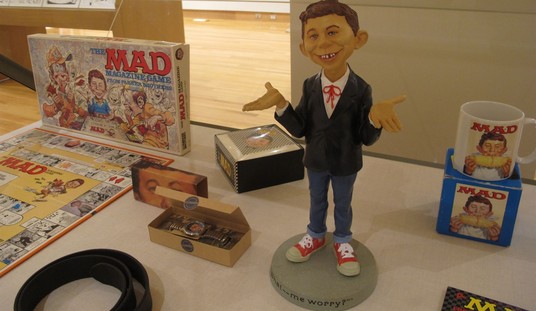Not everybody who wants to train for strength can fit a gym membership into their lifestyle. Scheduling problems, the cost, travel problems from home or work, the absence of an adequately equipped facility in the market, or simply the dislike of a commercial gym environment motivates many people to invest in a home gym.
A serviceable home gym for barbell training need not be a gigantic investment, and in fact should be very simple. A bar, some plates, a rack of some type to facilitate the squat and the pressing exercises, a simple flat bench for the bench press, and a platform for deadlifts are all that is absolutely required. For power cleans and snatches, a few bumper plates are quite useful but not absolutely necessary.
The equipment is simple, and need not be expensive, but there are a few tricks.
1. The Bar
This is the wrong place to save money. Of all the pieces in the gym, the quality of the bar is the most critical. The plates just hang there, the platform just lays there, but the bar is your connection to the force against which you lift — gravity.
Saving money is a good idea. Generic drugs are cheaper than the name-brand products, and they are essentially the same product. This is not true of Olympic barbells. In most cases, you get exactly what you pay for. Unless you get lucky — and these days of rapid expansion in the interest in barbell training, such luck is hard to come by — and find a good used bar cheap, expect to pay around $300 for a good bar.
Why? Because steel is expensive, competent manufacturing is expensive, and warehouse space costs money. A cheap bar will bend, and a badly bent bar is junk. A bar within about 3mm of perfectly straight is useable as a straight bar, while a bar bent more than 4-5mm out of straight is considered bent. When loaded with plates, a badly bent bar will rotate to a position of stability — it will “right” itself, with the ends of the bar pointing down and the bend in the middle pointing up. This is fine for a squat, if you have marked the bar so that you can take it out of the rack in this stable position. But if you unrack the bar for a squat, press, or bench press, or pull it from the floor in its unstable configuration, the bar will spin in your hands or on your back to right itself. This is not good, and can cause safety problems during the lift.
Most commercial gyms have a few bars, and usually all of them are bent, because they bought cheap junky bars not knowing any better or not caring about it. Bars get bent in commercial gyms by being dropped on benches, or inside the rack by jackasses that aren’t invested in the equipment. Even expensive bars will bend when 315 pounds is dropped across a bench. But cheap bars will bend if left loaded in the rack overnight.
You can check a bar for straightness by placing it on the floor and spinning it in the middle with your foot (if the revolving sleeves aren’t frozen, which is also bad). If it wobbles, it’s not straight. Or, you can see the wobble when you rotate it in the rack — the end of the bar will describe a circle in the air larger than the diameter of the sleeve, and the middle of the bar will move back and forth, the greatest deviation being at the point of the bend. One of the advantages of a home gym is that you get to work with a straight bar every time you train.
Bars are available in several diameters. The Olympic weightlifting federations specify a 28mm bar, while the International Powerlifting Federation wants the diameter to be between 28 and 29mm. The standard bar length is a little over seven feet, has “2-inch”/50mm diameter sleeves for loading the plates on, and weighs 20kg/44.1lbs. The thicker the bar, the stiffer the bar, so Olympic lifters doing the faster snatch and clean & jerk like the whippiness of a 28mm bar, and powerlifters need a stiffer bar because they handle heavier weights more slowly. Olympic lifting uses a 25mm bar for the women’s division (smaller hands need a smaller bar), and a competitive lifter will need one of these. For home gym purposes, a 28.5mm or 29mm bar will be the most durable and provide the best service over time.
Never buy a 32mm bar. They are either junk, or a specialty squat bar that a home gym doesn’t need. Usually they are junk. Scrap metal.
2. Plates
Plates just hang there. They are made of cast iron, and they add mass to the bar. They don’t have to be new, because new cast iron and old cast iron both weigh the same. All you care about is what they weigh, and how well they fit the sleeve of your bar. If you can find used plates, buy them. They are scarce these days, but you occasionally run into them at garage sales and used equipment stores. Used name-brand plates may cost 45 cents a pound these days, while new ones may be twice that or more. Add shipping to the calculation, and you’ll start looking harder for used plates.
Junky plates are sometimes cast with the hole in the middle too big for the bar sleeve. A plate with an inside diameter of 52mm or bigger will be sloppy on the bar. This won’t matter much unless the bar is loaded on the floor for the deadlift, when the bar rests on the plates instead of the plates hanging from the bar. Sloppy plates on the floor will lean to one side when loaded, and will have to be collared tightly in place to keep them from becoming a disorganized mess. But even for the squat, sloppy plates that wiggle on the bar as you step back can be distracting, and will always have to be collared to keep them still.
The best plates are calibrated to the precise weight on the face of the plate. Junky plates can weigh damn near anything. I have face-value 45s at my gym that weigh 41.75 and 56 pounds. As long as you know what the loaded bar weighs, and are able to balance each side with the same weight, this is fine. But accurately cast or milled-to-weight castings are much easier to train with.
Depending on how strong you are — or how strong you intend to get — you’ll need (in pounds) two to six pairs of 45s. The smaller plates are critical to make the training math work. You have to be able to load the bar to precise weights, the same weight every time, and in increments small enough to accommodate the exercises that don’t get strong very fast. You’ll need one pair of 25s, two pairs of 10s, one pair of 5s, one pair of 2.5s, and a set of “microplates” that allow the loading of increments smaller than five pounds.
You won’t find used microplates, and they can be expensive as a new set, but they can be made from stacks of 2-inch flat washers from the hardware store.
3. Bumper plates
If you’re going to do cleans and snatches, it’s much more convenient to use rubber “bumper” plates. In antiquity, we just caught the bar after the lift was completed and set it down on the platform — unless we were at a meet, where the platform was the meet director’s problem, not ours. Now, rubber plates allow the bar to be dropped to the ground without too much damage.
This has changed the nature of the lift, however. Since you don’t have to lower the lift under control, about half of the work is gone. But bumper plates are the way it’s done now, and they do in fact save a lot of wear and tear on the bar and the platform. They are always expensive, even when you can find them used, and this is getting hard to do these days.
You’ll probably end up buying them new, but the good news is that you will only need three pairs — a pair of 10kg/22lbs (bumpers are usually made in kilos for the Olympic weightlifting market, but pound denominations are available too), a pair of 15kg/33lbs, and a pair of 20kg/44lbs. You’ll find the 10s useful for warming up the deadlift if you’re not very strong yet, since they are the same diameter — 45 cm — as your iron 45s, so the bar is the same distance off the ground but only weighs 88 pounds. If you don’t intend to do the Olympic lifts, just get a pair of 10s so you can load a lighter weight on the floor.
4. The Rack
Squats, presses, and bench presses must be taken out of a rack of some sort, the purpose of which is to keep you from having to wrestle the bar into position from the floor — a process both dangerous and limiting to the weight you can lift that way. The rack provides a way to load the bar off the ground at an adjustable height by providing a “hook” on either side of the bar to hold the weight up.
Racks come in several different configurations, from a pair of simple individual stands to a garage-filling beast designed for a well-endowed university’s varsity weight room. Individual stands are dangerously unstable for an inexperienced trainee, and are a bad accident waiting to happen if you use them for the bench press. A better choice is a portable squat rack, which looks like two stands tied together at the bottom. It’s adjustable for both height of the bar and width between the hooks, and is much more stable than individual stands.
But the best option by far is the Power Rack or “cage,” a system of four to six perforated upright supports that permit the bar to be positioned both inside and outside the uprights at a variety of heights. A good rack has a floor that is integral to the frame, with a cross-member under the middle of the floor and a heavy plywood surface to stand on. A welded rack is always sturdier than one bolted together, but a bolted rack is much easier and cheaper to ship and install. A good rack, a flat bench, and a platform provide a way to safely perform all the barbell exercises alone in your home gym. By setting the cross-pins just under the range of motion for the squat or bench press, they eliminate the need for a spotter — the defining limitation for training at home by yourself.
A very good power rack will cost perhaps $1000, but they are findable in the used market, so look there first. In my opinion, the best racks are made from C-channel, but square tubing is more commonly used for uprights in most commercial racks. The power rack should be provided with both cross-pins and hooks, so that the bar can be placed either inside or outside the rack depending on the lift and the spotter situation.
5. Flat Bench
If you’re going to bench press, you have to lay down on something to do it. A flat bench is the device we use to do supine loaded movements with a barbell in the rack, or with dumbbells. Dumbbells are an expensive, entirely optional equipment choice for a home gym — forget I mentioned them. Your flat bench should be a simple one-piece unit that is hell for stout, yet still light enough to move around the garage when you’re not benching in the rack. And the power rack makes the heavy, expensive upright-support version used for powerlifting competitions unnecessary.
The standard dimensions of a bench are 12 inches wide, 48 inches long, and 17 inches high. Buy one in these dimensions, because taller/shorter/longer/narrower/wider benches have proven to be less useful than the standard design. It should be made from tubing or angle iron, have a lengthwise brace under the top and another one halfway down the legs, have feet as wide as the top, and use a solid 2×12 for the surface. Metal tops add unnecessarily to the weight, and a solid 2×12 piece of lumber is stout enough to handle world-record weights, and will therefore be just fine for you. Mine are covered with auto upholstery fabric, because it lasts about 15 times longer than vinyl, and is not slippery under any conditions.
6. The Platform
This useful item keeps you from destroying your floor. Its size will depend on how much room you have, but the biggest one you can build will be the most useful to you, giving you plenty of room to work in front of your rack. Build it from 4×8 sheets of plywood, and six pieces/three layers — each layer turned at 90 degrees — makes a nice square platform. The platform must be flush with the floor of your rack when pulled up against the wood, so the height of the rack floor will determine the combined thicknesses of the plywood. The platform/rack floor surface must be flush or you will have a significant trip hazard, so measure carefully. Many people cover both the rack floor and the platform with horse trailer mat rubber, to protect the wood and to provide a non-slip surface. Some cutting of the rubber will be necessary – use a utility knife and some spray soap to make the cuts, and you’ll save time and aggravation.
A platform laid flat on a concrete floor will require flipping from time to time, depending on the humidity in your area. The underside absorbs moisture and swells while the top dries out, so the surface will “dish” eventually to the extent that the platform wobbles when you step on the edges. The rubber may mitigate this effect, and may be worth installing for that reason. If the platform must be flipped, make sure you build it with deck screws driven in from both surfaces, so that it holds together during the movement. Flipping takes at least two people, so schedule it with your friends.
Since you’re going to ask, the best equipment companies to deal with for bars, plates, bumpers, racks, and benches are Rogue Fitness (www.roguefitness.com) and Elite Fitness Systems (www.elitefts.com). In an industry famous for bad to terrible customer service, these guys will take care of you. I don’t buy from anybody else.
My custom-designed power rack is made by Brown Bros. Welding in Wichita Falls, Texas. I am not in the equipment business, and I make no money from equipment sales — none whatsoever. So when I tell you these guys are good, believe it.
For an investment of at most $2500 — five years’ gym dues or less, and probably much cheaper than that — you can build a world-class facility in your 500-square-foot space at home. You can train whenever you want to, with equipment whose quality and maintenance you alone control. For many people, this means the difference between a focused, convenient workout and the aggravation of having to deal with fools, s***ty equipment, and travel time. Invest wisely and you’ll never regret owning good equipment, or the independence made possible by owning your own gym.















Join the conversation as a VIP Member